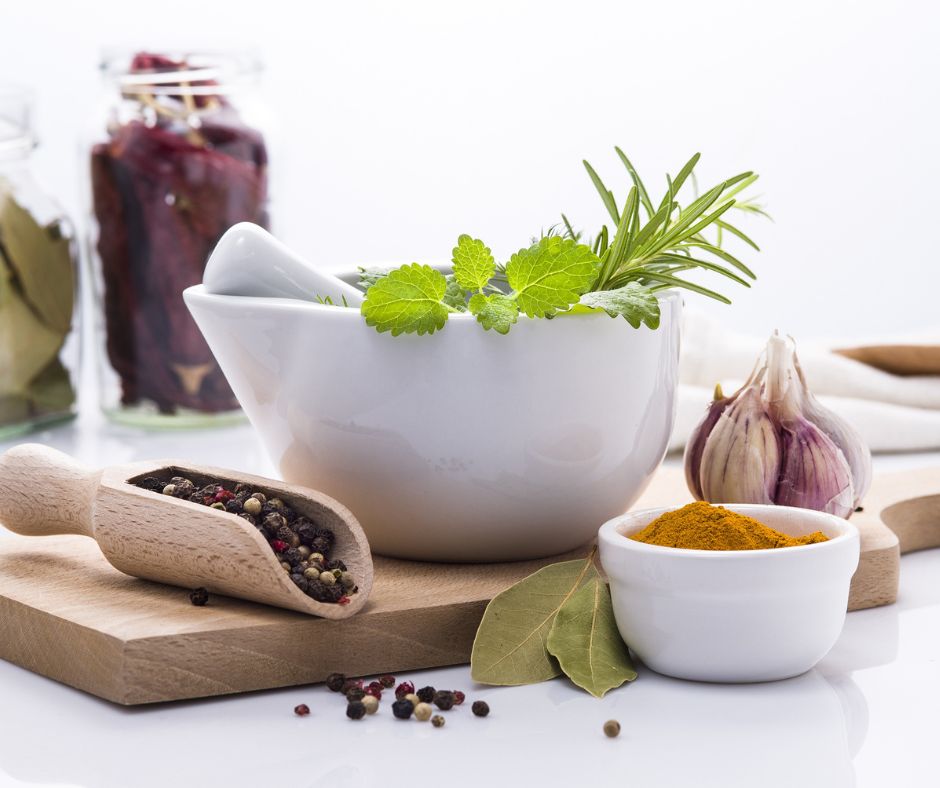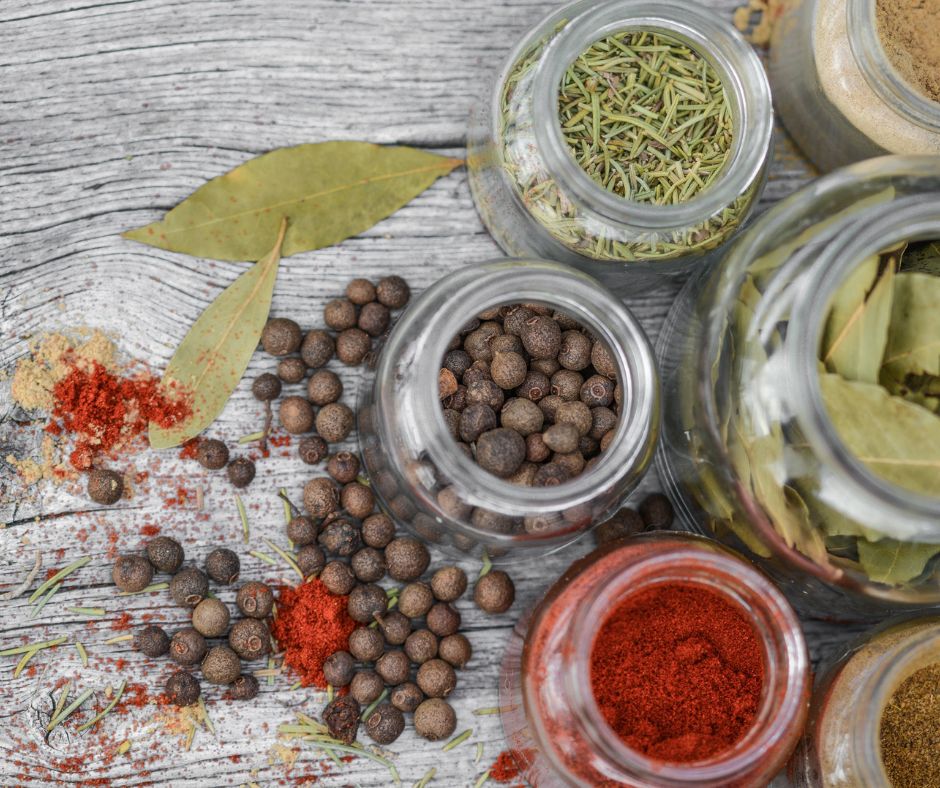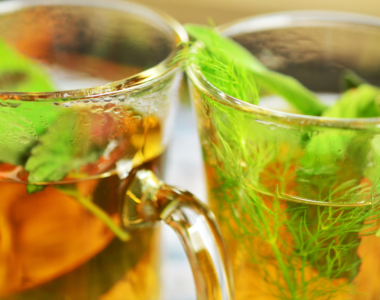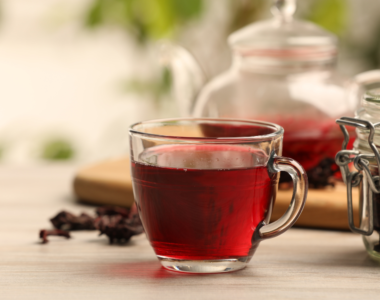
Although spices and herbs have been used since antiquity, they now have a new and significant role in the preparation of food today. They not only give our cuisine distinctive flavors but also color and variety. Some herbs and spices can replace or reduce salt and sugar in cuisine when used alone or in blends.
Table of Contents
What are spices and herbs?
Many people interchangeably refer to any item of plant origin used mostly for seasoning food when they use the terms. Strictly speaking, spices are made from tropical plants, whereas herbs are derived from aromatic species grown in the temperate zone. Herbs are often utilized in their leaves, although spices might be derived from bark, berries, flower buds, roots, or seeds.
Do herbs and spices add any nutritive value to foods?

Herbs and spices are only used to flavor or color food; they have very little if any, nutritional benefit. In general, they are low in calories, sodium, and fat and have no cholesterol, although some of the oil-rich seeds, such as poppy and sesame, include a significant number of calories. Moreover, some seasonings, such as celery or parsley flakes, have a sufficient amount of sodium to count. But because they are used in such small amounts, these components are not a problem unless a recipe calls for an exceptionally big amount or unless the diet limitation is really rigorous.
Using Herbs and Spices
Today, the most common piece of advice is, “Use herbs and spices for taste instead of salt.” This raises the question, which spice should I use with which foods? The amount? how are they combined? Here are some places to start:
- Start with some of the simpler herbs and spices because they are less expensive. Americans prefer pepper, basil, oregano, and cinnamon in particular.
- Mix a herb with butter, margarine, or cream cheese, let it sit for at least an hour, then try it on a cracker to get a feel for the flavor.
- Despite the fact that each spice and herb has a unique flavor, some can be combined.
- Bay leaf, cardamom, curry (which is actually a combination of spices), ginger, pepper, mustard, rosemary, and sage are some examples of strong or dominant flavors.
- moderate quantity of tastes with medium intensity (1 to 2 teaspoons for 6 servings). Contains basil, celery seeds and leaves, cumin, dill, fennel, French tarragon, garlic, marjoram, mint, oregano, savory, thyme, and turmeric.
- Subtle flavors: parsley, chives, burnet, and chervil. May be blended with the majority of other herbs and spices and used in big amounts.
Storing Herbs and Spices
Store herbs and spices in airtight containers and in a cool, dry area away from the stove. Instead of using cardboard, store dried herbs in plastic bags, glass jars, or stainless-steel containers. Keep containers away from direct sunlight to prevent herb color fading and potency reduction.
If the spice or herb has lost its flavor, your recipes won’t taste as nice. It won’t work to just increase the amount called for in the recipe. Crush a tiny number of whole spices and give them a smell once a year to check on their freshness. Fresh and overpowering aromas are preferred. Use the same procedure to inspect dried herbs every two to three years and ground spices every six months.
Because spices and herbs are expensive, storing them in airtight containers in the refrigerator or freezer extends their shelf life. Refrigeration will extend the flavor and color’s shelf life and lessen the possibility of insect infestation. Certain seasonings, including paprika, chili powder, and red pepper, are insect attractants.
if you are looking for a place to buy these herbs or spices, you can purchase them from ceylonauthentics.com
Why should I use spices and herbs in my cooking?
Spices and herbs go beyond adding flavor to your food. They can:
Enhance the taste of natural ingredients.
Boost the nutritional value of dishes.
Add complexity and depth of flavor.
Create a variety of cuisines from around the world.
I’m new to cooking. Are spices and herbs difficult to use?
Not at all! Many spices and herbs are quite versatile and can be easily incorporated into your dishes. Starting with a few basics and experimenting with simple recipes is a great way to begin.
What are some essential spices and herbs to have on hand?
A basic pantry of spices and herbs can elevate your cooking considerably. Here are some popular choices:
Spices: Garlic powder, onion powder, paprika, ground cumin, chili powder, oregano, black pepper, cinnamon.
Herbs: Dried basil, thyme, parsley, oregano, rosemary (fresh or dried).
Where can I buy spices and herbs?
You can find a wide variety of spices and herbs at most grocery stores, supermarkets, and ethnic grocery stores. Online retailers also offer a large selection.
Whole spices vs. ground spices: What’s the difference?
Whole spices (e.g., peppercorns, cloves) retain their flavor for longer but need to be ground before use. Ground spices (e.g., ground cinnamon, paprika) are more convenient but lose potency faster. Consider buying whole spices for stronger flavors and grinding them yourself as needed.
Fresh vs. dried herbs: Which should I use?
Fresh herbs generally have a more vibrant flavor, but they have a shorter shelf life. Dried herbs are convenient and have a concentrated flavor, making a little go a long way. Ultimately, the choice depends on your recipe and personal preference.
How long do spices and herbs last?
Whole spices generally stay fresh longer (up to 2-4 years) than ground spices (6 months to a year). Dried herbs can last for about 1-2 years. Store your spices and herbs in airtight containers in a cool, dark place away from direct sunlight or heat.
I’m worried about buying spices and them going bad before I can use them all. What can I do?
Start by buying smaller quantities, especially if you’re new to using spices and herbs. Many grocery stores offer pre-measured spice blends for specific cuisines, which can be a cost-effective way to experiment with different flavors.
How much spice or herb should I add to my recipe?
Recipes often provide recommended quantities, but feel free to adjust to your taste preferences. Start with a smaller amount and add more to taste. It’s easier to add more than to remove excess spice.
Are there any safety concerns with using spices and herbs?
Spices and herbs are generally safe for most people. However, if you have allergies or sensitivities, be sure to check the ingredients list before using them. When buying online, be sure to purchase from reputable sources.



